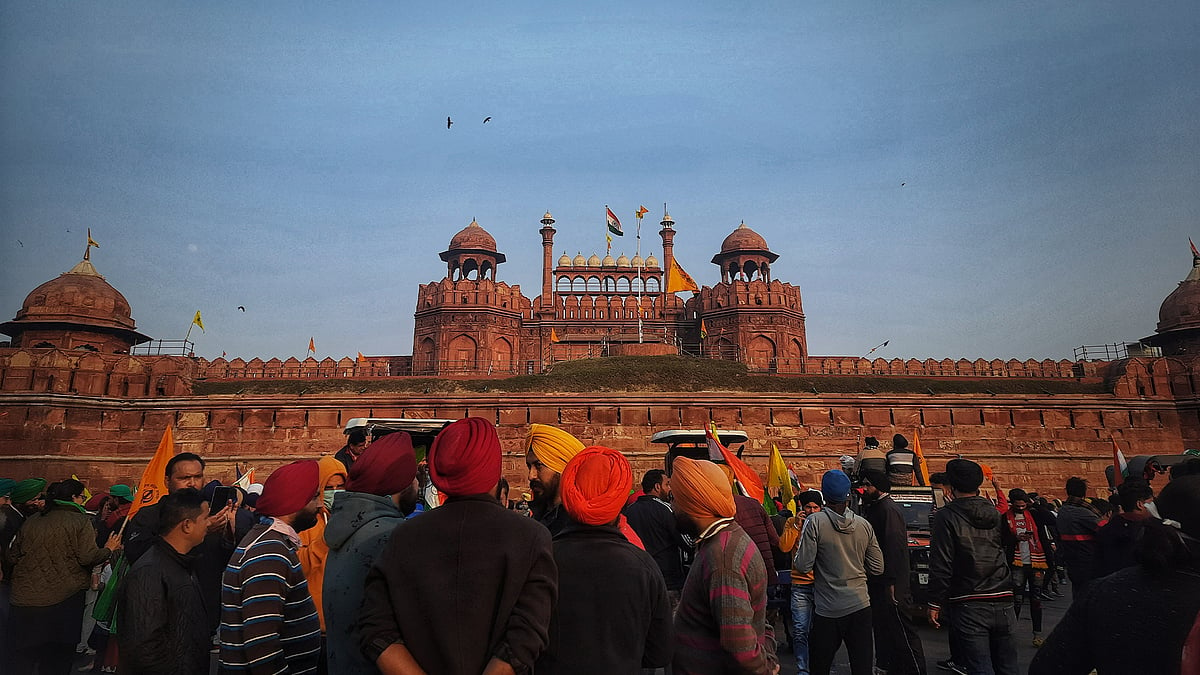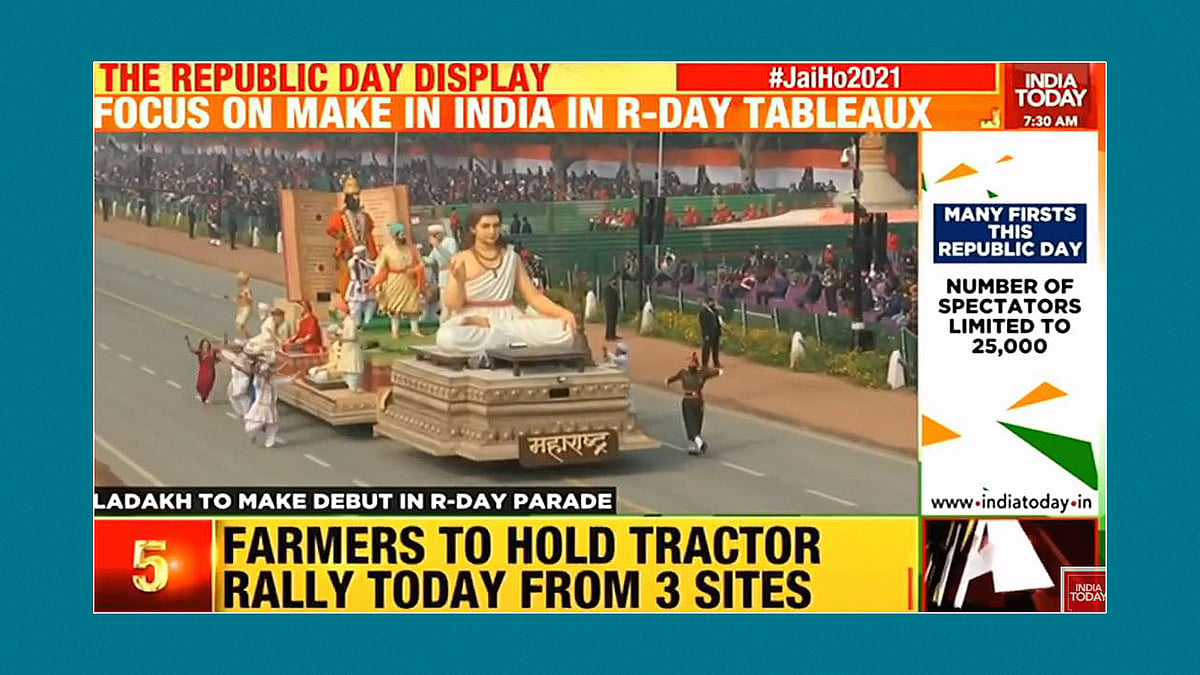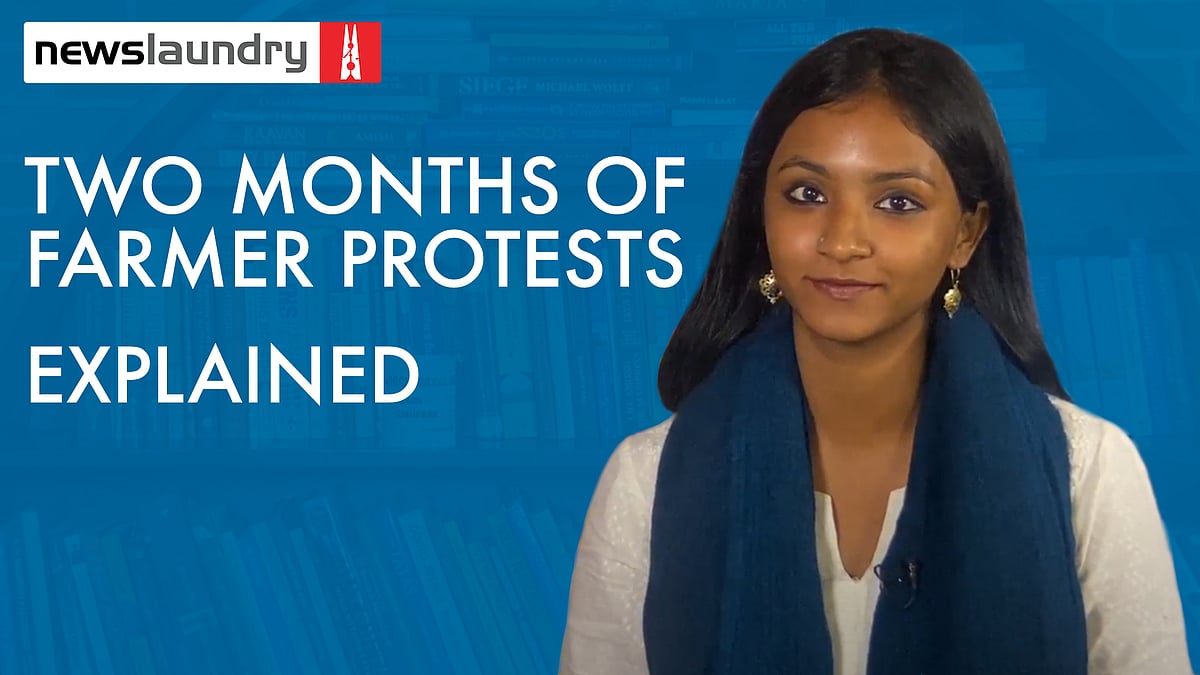‘Government wants to create chaos’: Singhu is sombre after Republic Day violence
The protesting farmers rubbished claims they were heading home and alleged the ‘locals’ who targeted them were from the RSS.
“Yes, there was a group of RSS people,” said a farmer at Singhu. “Around 150 people came at around 1.30 pm and threatened us saying we should vacate the protest site, otherwise they would return with two lakh people.”
It was around 7 pm on January 28, two days after violence had broken out during the farmers’ tractor rally on Republic Day. The farmers had returned to their protest sites along Delhi’s border, including Singhu, following their march into the national capital. They have been camped on Delhi’s border for two months now, protesting against the new farm laws passed by the Narendra Modi government.
After the Republic Day violence, the police barricaded the protest sites further. Any person entering or exiting the Singhu protest site needs to take a detour of 1.5 km.
In the afternoon on January 28, a group of people claiming to be local residents had landed at the Singhu protest site and told the farmers to leave. As per news reports, they staged a demonstration against the farmers and shouted slogans like “Jai Bharat, Jai Ram”.
According to the farmers, including the one who spoke with Newslaundry on the condition of anonymity, the demonstrators weren’t “locals”, but members of the Rashtriya Swayamsevak Sangh. Kisan Mazdoor Sangharsh Committee leader Satnam Singh Pannu also told ANI that the government was “sending RSS-affiliated people to instigate clashes”.
On Friday, clashes took place at Singhu between the farmers and “locals”. The police lathicharged and teargassed the crowd in response. One police personnel was reportedly injured.
So, security has been heightened at Singhu.
As we stood at the protest site, a young local woman, returning home from work, pleaded with a police constable. “Sir, please let me go in,” she said. “It’s dark and I don’t want to take this detour. There are no street lights there. Besides, my house is five minutes from here.”
The constable wouldn’t relent and she hurried down the dark path. She would have to walk in the dark for at least 2 km to reach her house, which is only 50 metres from the police barricade.
“Since the Lal Qila incident, the police seal the entry and exit by evening,” a farmer at the site said.
On January 26, the farmers held a tractor rally into Delhi from their protest sites at Singhu, Tikri and Ghazipur. According to the police, the farmers “deviated” from the assigned routes, and broke through barricades and headed to central Delhi. The police teargassed and lathicharged the protesters. By 2 pm, a group of farmers had unfurled the Nishan Sahib, the Sikh religious flag, on the Red Fort.
 ‘You cannot unsee us’: Driving with farmers during the tractor rally
‘You cannot unsee us’: Driving with farmers during the tractor rally Republic Day parade vs tractor rally: What TV news channels showed and ignored
Republic Day parade vs tractor rally: What TV news channels showed and ignored Explained: Two months on, what’s happening at the farmer protests?
Explained: Two months on, what’s happening at the farmer protests?
As a result, the contingent of security personnel at Singhu is now conspicuously larger than usual. When asked, police inspector Sudheer Kumar refused to comment on how many personnel were added after January 26. Regarding the entry being sealed, he said, “The local villagers are getting frustrated. Today they came in a group and told the farmers to move away.”
Were any of them from the RSS? “No,” Kumar said. “They were all just locals who are frustrated with the protest.”
On designated routes and Lal Qila
Forty-eight hours after Republic Day, the mood at Singhu is sombre. Despite rumours on social media that most of the farmers are heading home, the protesters said they are staying put.
“The protest is going on as usual,” said Satpal Singh, a farmer from Punjab. “Yes, a few people had come specifically for the Republic Day rally. They have gone back.” Satpal added that since it’s the season for potato harvest, some farmers have gone home to tend to their crops, but will return once they are done.
Another farmer, Gurmeet Singh, said the sentiment is divided on the events of January 26: while some support what happened at the Red Fort, others do not.
“The government wants to create chaos,” he argued. “They want things to go wrong so that we fight among ourselves, eventually get tired, and go home.”
One of the bones of contention is the allegation that the farmers did not follow the routes assigned to them by the police for the tractor rally and instead headed to the Red Fort. While some farmers told Newslaundry the designated routes were a “joke” to keep the farmers confined to Delhi’s outskirts, where they would not be seen or heard, others said they had no idea that they were straying from the routes.
As one farmer, on the condition of anonymity, explained: “We don’t know the roads of Delhi. We were just following the tractor rally and before we knew it, we had reached central Delhi.”
At about 11 am on January 26, the police began teargassing the farmers at the Sanjay Gandhi Transport Nagar, about 16 km from Singhu. The farmers had been expected to move down the GT Karnal Road back to Singhu. Instead, they went towards Kashmere Gate ISBT.


However, Manjeet Singh, a farmer who was there, said the police had closed off the road they were expected to take. Instead, he added, the police opened up the road heading to Delhi.
“It almost seemed like they wanted us to go to Delhi,” he claimed. “We had no plans of going there. It was only a section of people who wanted to go.”
Manjeet also alleged that a “small group” had created “the entire chaos”. “The rest of the protest was peaceful and confused,” he said. “People were trying to make sense of what was happening. Anyway, it was only a small group of people that ended up at Lal Qila.”
While most of the farmers Newslaundry spoke with said the Red Fort flag-hoisting shouldn’t have happened, they asked why the police had allowed “small groups” to take over the rally.
“How come the police were so relaxed?” asked Lakhminder Singh. “Why did they not put up stronger barricades or push back harder on these small groups? The rest of us could have also stopped these few men if the police had pushed back more.”
Not everyone agreed. Jagvir Singh said, “I don’t think what happened at Lal Qila was wrong. What’s wrong with Nishan Sahib? It’s the same flag the prime minister ties on his head whenever he visits Punjab.”
Jagvir added that the farmers have been protesting in Delhi’s bitter winter for over two months, yet the prime minister has paid them no heed. “Now when a flag went up, everyone started acting like we committed a grave crime,” he said. “And if you call this a Khalistani flag, then Modi should also be called Khalistani, right? He wears this flag too.”
Jagvir was referring to widespread rumours that the farmers had hoisted a Khalistani flag at the Red Fort, or that they had replaced the Indian tricolour with this purported Khalistani flag. These rumours have since been debunked.
He also told Newslaundry that he knows the person who hoisted the flag on the Red Fort. “It all happened because of the rush of young blood,” he said. “I know that guy, he lives close to my home. He has no criminal record. Woh bas josh mein tha.” He was just in a youthful mood.
Did Jagvir and his friends plan to break away from the designated route and head to central Delhi?
“No, I was not part of the planning,” he said. “But you have to understand: we haven’t got any proper or fair political and media attention ever since we started sitting here. So, on that day, everybody was in high spirits. The young people were frustrated. So, in that moment, many of us thought, ‘If they are not listening to us, why should we listen to them?’”
‘Punjab, Haryana, bhai, bhai’
On January 27, farmer leader Balbir Singh Rajewal angered some protesters when he called Haryana youth “misguided” and accused them of leading others to the Red Fort. Rajewal was forced to retract his remarks the following day, and apologised through a Facebook video.
“This is a Kisan Andolan,” he said in the video. “I have worked in 1978 with many Haryana unions and later as well. Then why would I say anything about Haryana farmers?”
To emphasise the unity between farmers from Punjab and Haryana, a tiranga rally was organised at Singhu on January 28. The rally included a march using tractors and other vehicles and was led by Gurnam Singh Chaduni, president of the Bharatiya Kisan Union Chaduni in Haryana.
Sitting atop a Scorpio, Chaduni urged the crowd to join the procession. “Haryana, Punjab,” he yelled. The crowd yelled back, “Bhai, bhai.” Brothers.
Rajewal and Darshan Pal, a farmer leader from Punjab, followed behind in their own vehicle. “Since the Republic Day, the mood on the ground has been depressing,” Pal told Newslaundry. “Today’s rally was to change this mood.”
He added, “I don’t know why the national media is covering us so badly.”


Manjeet, the farmer who had been at the Sanjay Gandhi Transport Nagar, agreed. From the way some big media houses have covered their protests, he argued, it was clear that “these anchors have not been on the ground”. He also said it’s “evident” that news anchors are compelled to cover the protests in the way the BJP wants.
“Most of these channels are owned or sponsored by BJP’s money,” he said. “So, of course they can’t report properly. Anyway, nowadays if you speak against the BJP, you’re a terrorist and an anti-national.”
‘Respect India or find your own toilet’
There have been other changes at Singhu.
There are three HP petrol pumps outside the protest site. For the last two months, the owners have given space to the farmers to sleep and use their washrooms. The mobile toilets outside the protest area are cumbersome for most of the women protesters, so they used the toilets at the petrol pumps.
After January 26, the police evicted the farmers from the three pumps.
“The police told us not to allow any more farmers to use our place,” said a worker at one of the pumps. When asked what he thought of this decision, he said, “It is good. Anyway these farmers are hooligans. See what they did to our national flag at Lal Qila. If they can’t respect this country, they can go find their own toilets.”
When Newslaundry told him the Indian flag at Red Fort hadn’t been touched, he said: “I don’t believe that. How can almost all news channels falsely say they disrespected the flag? There must be some truth to it.”
Nihangs: ‘We’re here to protect our people’
In early December, a few days after the farmers arrived on Delhi’s border, the Nihangs, an armed warrior clan of Sikhs, made their way to Singhu. They took up the space between the protesters and the police barricades, and haven’t left since. Most of them spend their days at Singhu cleaning and tending to their horses in a makeshift stable.
On Republic Day, as the farmers set off on their tractors, the Nihangs rode out on horseback. In the violence that followed, two horses allegedly died due to teargas shelling. However, Aman Singh, a senior leader of the clan at Singhu, told Newslaundry that the Nihangs have nothing to do with the protest.
“We don’t care about the farm laws,” Aman said. “We are religious people.”
Why are the Nihangs at the protest then? “We are here simply to protect our people,” he replied. “We have no opinion on the laws themselves.”
Asked why the Nihangs joined the rally on Republic Day, he claimed they were in Delhi to visit Gurudwara Sis Ganj Sahib, a historical Sikh place of worship in the capital. “This place happened to be close to the Red Fort,” he said. “So, when we heard the farmers were reaching there, we also went. By then the flag had been hoisted.”
